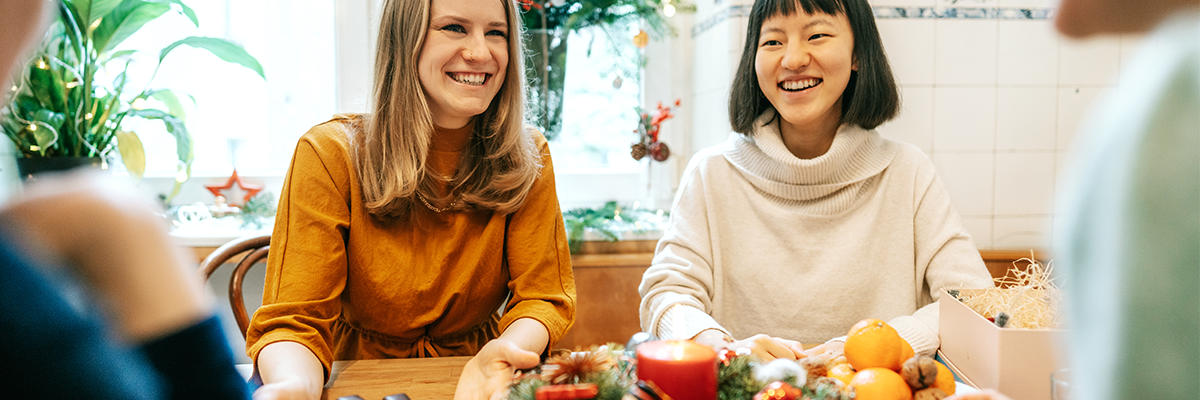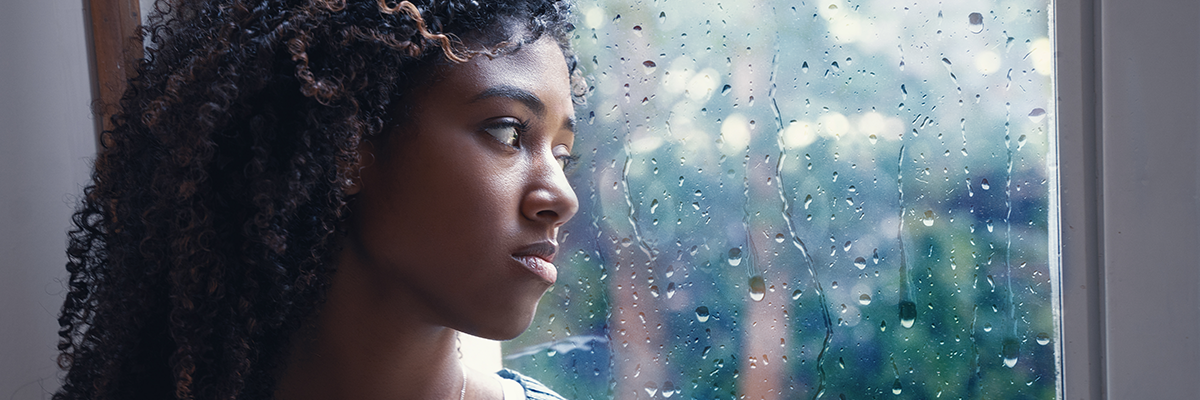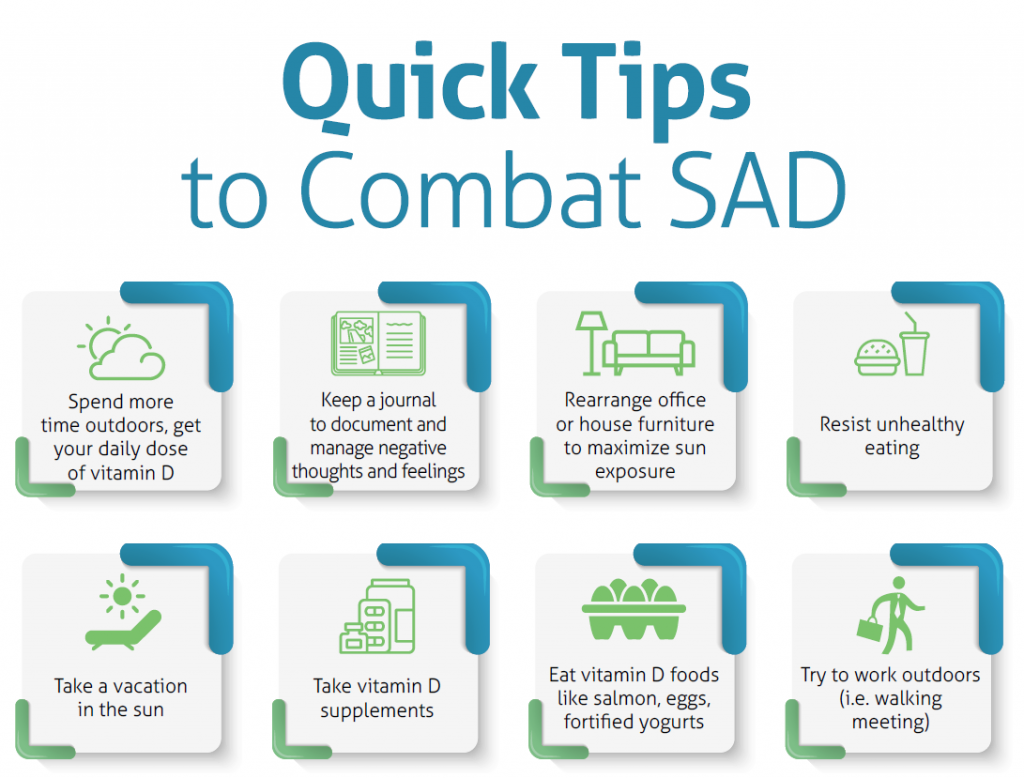Navigating the Holidays When You’re in Recovery
Navigating the Holidays When You’re in Recovery

It’s the time of year where invitations to gather with family, friends and co-workers are plentiful. For some the memories and celebrations attached to the season can be big ‘triggers’. But don’t worry about your social calendar. Manage it!
Seasonal celebrations and holidays can be wonderful times for people to come together. Families, workplaces and community organizations often host events that can be fun to attend, but they can also be sources of stress for many people. For someone in recovery, however; these kinds of gatherings can be particularly challenging as they may involve a lot of triggers or tempting environments. You know you’ll be invited to attend, but what if you’re already feeling nervous about how to respond?
Under pressure
Realize that you are probably putting unnecessary pressure on yourself if you are thinking that you have to accept every invitation you get. The last thing you need is to be stressed about going to your aunt’s for dinner and then meeting up with your co-workers at a holiday bash. Sometimes there are simply too many things going on. It’s totally fine to pick some, or even none of them based on how you feel at this point in your recovery. Your number one responsibility is to your health and well-being. So, the main principle that should guide your social calendar is: what is healthiest for you, and what’s best for your sobriety!
It would be great if people treated addictions the way they treat allergies – with sensitivity, understanding and extra effort to make sure you’ll be safe. Small steps can lead to big changes. Take the first one by focusing on yourself. Start each day with a little promise to yourself you will do your best to stay sober.
Go ahead. Make plans…but not that kind
The next few steps you take are about acknowledging your feelings and addressing your anticipation. You need to spend time thinking about what could happen at these events and what is going to help you feel good and be confident so that you can keep your promise. Here are four strategies you can use to think this through:
1. Be honest with yourself
Take a few minutes to consider how you are feeling about your recovery at this point in time. What words come to mind? Are you feeling strong? Would you say you are vulnerable? Perhaps you’re excited? Or anxious? Or maybe you’re nervous? What are the strengths and tools that can aide you in your recovery, during this period?
Write all of these feelings and words down and then leave them for a few hours. Come back to them later in the day. Do you feel the same way? Thinking about your feelings and then releasing your thoughts can be a powerful way to help you be aware of where you are right now, in the present moment.
2. Be realistic about how these events can make you feel
Look at all of these occasions and instead of thinking about what’s in it for me, think about what could it do to me? Interacting with family, friends and co-workers can be exhausting and stressful, making you more susceptible to going along with whatever they are doing. You need to stay focused, fed and well rested, so your decision making is clear and confident. When you’re tired, hungry and distracted, it’s easier to be persuaded to abandon your plan.
3. Be kind to yourself. Guilt-free
Give yourself permission to bow out when you’re not sure how an event will go. Don’t ever feel pressured or obligated to show up to each and every occasion you might be invited to. Be kind enough to yourself to figure out what the purpose of the occasion is from your point of view. It’s all about perspective. If you are struggling with finding a meaning that feels right, then take a pass. Remember, send your regrets, but don’t think that you need to offer a lengthy explanation.
4. Be aware of your triggers and be ready to act
Knowing how you tend to react when you encounter one of your triggers helps you learn to avoid them. Face it: these could come up when you least expect them and be related to times of day, places, people or situations. Realize that these feelings and temptations are associations and also that they will pass. Cravings are just emotions that your brain is using to tell you how to behave [Heshmat 2015]. They usually only last about 20-30 minutes, and then they diminish. While they’re at their most intense during that time, you can redirect your thinking. Get a change of scenery and go for a walk, try finding a quiet place to meditate or focus on deep breathing, or call someone in your support network to talk.
All in the family
When you do decide to partake in a holiday gathering, there are some tips you can use to make hanging with the cousins more bearable. In all families, some people are supportive, and others are not. It’s important to be prepared for this during the holidays. Take inventory of who you know is tactful, trustworthy, and respectful. Spend time with them and avoid the unsupportive people as much as possible. You might even want to speak with the hosts beforehand and share your concerns. Talk about how you will — and how they should — respond if a situation arises. Talk about what you will be saying to decline offers you may get from other guests like: ‘Have a drink with me!’, ‘It’s only one!’ and ‘Come on, it’s a party, have some fun!’ and ask for their support. It doesn’t mean they need to make an announcement or “prepare people” before they arrive. It’s about being honest and building a better response to the situation. It helps to have a script of what you will say to people, to explain that you’re not going to be drinking. You can limit it to what you’re comfortable sharing, but it should include a clear, assertive “no” message, with no room for negotiation.
Above all, do your best to stay calm. Remember that there is no perfect family gathering. Things are always messy. If you feel like the situation is going to cause you pain, it may not be the right time for you to attend. And that’s okay. You don’t want to have feelings of added tension, stress or guilt associated with anyone or the holiday celebrations themselves.
Come on everybody: attending parties with friends and co-workers
Celebrating with friends and co-workers may be different from family gatherings, but these events can also cause you stress. Thankfully, you can use some of the same strategies you put in place to deal with that dinner. Stick with people you know and trust who support you. Avoid those you don’t know and watch out for those whose intentions you instinctively aren’t sure of. Stay calm in all interactions and do some party planning of your own beforehand.
Make party plans
1. Set goals and times for yourself
Arrive early and be prepared to leave early too if you find you’re having a difficult time being around people who are drinking. As parties go on longer, people tend to drink more and become more relaxed and take things in a different direction. Leaving before things get wilder isn’t a bad thing. You’ll be in control and not have any next-day regrets.
2. Consider bringing your own beverages (BYOB)
Sometimes you can bring your own drinks to be sure you have complete control of what you’re consuming. You won’t have to worry about anyone accidentally making a drink for you that is going to trigger a setback in your recovery.
3.Use the buddy system
Have someone who you trust and can rely on to recognize a situation that may be developing, distract you and intervene if something goes wrong. Your buddy should be completely sober: no drinking, smoking or using drugs. This person is going to act as your advocate.
4. Be the one who others lean on
Having responsibility for others can sometimes help reduce the stress you are feeling. Why not consider offering to be the designated driver for a group of people? It’s a role that everyone will understand is essential and not question your motivations or actions. As the driver, you’ll also be able to leave when you want to.
What to do if you experience a slip or lapse
Addiction and relapse are not only about the substances, but also about the emotional voids you are trying to fill. Relapse is often a part of the recovery journey, but the emotional responses it can incite can be devastating.
Don’t let yourself get stuck. And don’t be too hard on yourself. If you feel hopeless, humiliated or guilty, be open to finding hope again. Work through any anger or fear and find the courage to be honest and begin addressing the underlying issues that caused you to slip. When needed, be sure to seek social support from people you trust and seek professional help when you need it.
With determination and a little help, you can find your way again.
References
1. Heshmat, S. Ph.D. (January 7, 2015). Why Cravings Occur. Cravings and Trigger factors. Psychology Today.
Reducing Holiday Stress
Reducing Holiday Stress

The holidays are a wonderful time of year. But it can also be a time when we feel the most pressured.
Here Are Some Tips to Help You Manage the Holidays:
- Manage the occasion. You may need to be more assertive and say ‘no’ to events that don’t add meaning to the holiday season for you personally.
- Clarify family expectations. This may mean not giving a gift to every grown family member or rotating who will give a gift each year.
- Lower your financial burden. Budget your spending and stick to it. If you can get through the holidays without major debt afterwards, you can enjoy the season without the guilt.
- Get organized ahead of time. Plan ahead as best as you can to get your gift wrapping and other chores done before the last minute. Then give yourself the gift of relaxation rather than stress!
- Remember that it’s the thought that counts. Don’t let competitiveness and perfectionism send you on too many shopping trips. Homemade, thoughtful, inexpensive gifts from the heart are often cherished far more than high-priced items.
- Take short relaxation breaks. If you find yourself trying to sustain a fast pace, be sure to take some down time. Just taking a few minutes to take a few deep breaths and consciously breathe away tension can be a big help.
- Make a list. Write down everything you’d like to do this holiday season and set reasonable priorities in order to get the most amount of joy from the limited amount of time you have to spend with family, friends, and co-workers. Remember, this year’s priorities may look different than those of past holidays.
- Take care of yourself. For most people, the holidays go hand-in-hand with too much sugar, fat, caffeine, and alcohol, and not nearly enough exercise and sleep. One of the best ways to combat stress is to pay attention to your body’s need for healthy food, exercise, and sleep during this busy time of year.
- Take time to laugh. If you get too stressed, take a laughter break and rent a funny holiday comedy. Laughter is the best medicine.
- Make a change. With the holiday season fast approaching, make a commitment to yourself to find a deeper satisfaction in the holiday experience. Don’t just do things because they fit into your schedule.
Instead, consider if the event or activity fits in with your values and the meaning of the season. Remember, life is really about the journey. Savour the moments — allow yourself enough time to celebrate each activity before rushing on to the next.
Don’t let the hustle and bustle of the season steal away opportunities to be thankful for the people, experiences, and events that will make this year unique and memorable. Last, but not least, commit to taking some time to reflect on the deeper meaning and spirit of the holidays for you personally, for your family, and for humanity and the world. Happy holidays!
Healthy Habits: Positive Influences on Mental Health and Addiction
Healthy Habits: Positive Influences on Mental Health and Addiction

Recovery can be lonely, scary and often confusing, with an array of mental and physical obstacles.
Being in recovery can sometimes feel like you have been placed into a remote location, amid unfamiliar surroundings, with the added complexity and challenge of finding your way back to civilization.
The path ahead of you doesn’t run in a straight line. It’s important to recognize and take inventory of the skills and tools you have acquired, and to know how and when to use these strategies to help you navigate your recovery journey. Acknowledging that factors like dedicated time, heartfelt commitment and focused attention are keys to recovery sustainability, you’ll need to keep your eyes open to spot all of the resources in your environment that will support you on your journey. As you look at your path each day, you’ll discover new self-care supports that may surprise you in their simplicity. No matter how insignificant they may seem, allowing yourself to see the good in every day, appreciating the beauty of natural surroundings, and reaching out for help, or helping others, can be powerful daily additions as you build strength and resilience.
It’s easy to rush through your days with blinders on. Sometimes, we’re so internally focussed that it can be exhausting, leaving us more susceptible to negative thinking. In many instances, we pay more attention to the “bad qualities in others rather than the good ones: the things that worry or annoy us, or make us critical.” (1)With a “negative bias” for the “bad, or at best, [looking at] neutral qualities in others and only a sprinkling of good ones you naturally feel less supported, less safe and less inclined to be generous or [to] pursue your dreams.”(1) Developing the ability to move outside of a cycle of negative thoughts and observe the positive in other people can do a lot of good. We learn a lot from other people, and this learning increases and broadens our mental and emotional perspectives, which, in turn, makes us more resilient.
Reflecting on positive moments observed during each day can help you change habits: you can see new ways to fix mistakes and solve problems. Throughout your lifetime, your brain catalogues all of your experiences. The science of neuroplasticity shows us that our brain structure can be changed and adapt to build resilience, form new connections and take control of reorganizing itself.(2)
So how do you start retraining your brain to see the good in every day? Start with small observations by, “seeing the good in others. It’s a simple but very powerful way to feel happier and more confident, and become more loving and more productive in the world.”(3) When you inevitably reflect on challenges within your day, don’t spend all of your time on negatives – be sure also to find at least one good thing. Remember, it doesn’t need to be something big. It could be as simple as a smile you offered while you held the door for someone.
It’s important to recognize that the good you see in others is also in you. You couldn’t see that good if you did not have an inkling of what it was. You, too have positive intentions, real abilities and virtues of mind and heart. Those qualities are a fact, as much as a fact as the chair you’re sitting on. Take a moment to let that sink in. You don’t need a halo to be a truly good person. You are a truly good person.(3)
Another essential tool for self-care is developing an appreciation for the beauty of natural surroundings. Research points to the benefits of spending time outside where you can get a boost of happiness and feel better connected to the world. “Well-being increases if people simply take time to notice the nature around them.”(4) The examples in the study showed that nature can be “anything not human-built: a houseplant, a dandelion growing in a crack in a sidewalk, wildlife, or sun through a window.”(4) Participants were asked to take a photo of the natural object they encountered and write a short note about it.
It’s important to note that “this wasn’t about spending hours outdoors or going for long walks in the wilderness, it was about the tree at a bus stop in the middle of a city and the positive effect that one tree can have.”(4)
Being in natural surroundings can allow you to be more open to multi-sensory experiences where you awake more of your brain through the sights, smells, tastes, touches, and sounds to create associations that form strong memories.(5)
Go ahead, exercise – go outside for a walk. Look around at your physical surroundings and forget for a moment or two about “your needs, worries, regrets or desires for the future.”(6) You’ll not only benefit your mental health but also your physical health by spending time in green space. In one study, “Forest bathing”, where people spend time sitting, lying down or just walking around in nature, lowered blood pressure, reduced heart rates and decreased stress. In addition, research suggested that people who spent time outdoors had a lower risk of developing Type II diabetes and cardiovascular disease than those who did not spend any time outside. Spending time outdoors also increased how long research participants slept.(7) Give it a try – take off your shoes and walk barefoot in the grass. You’ll feel more grounded as a result.
Not only can immersing yourself in nature bring significant benefits, but surrounding yourself with positive, supportive people can make a big difference in helping you to keep moving forward on a sustainable recovery pathway. Interestingly enough, this can go both ways. Reaching out and helping others who are just starting their journey through recovery can be a highly effective, positive therapy because it can, “take the attention off yourself… assist the other person in making progress and [you may] receive gratitude for your efforts” which, in turn, can give you perspective, boost your sense of purpose and make you feel happier.(8) Being able to recognize earlier challenges that you faced and overcame, and speaking with others about it, helps develop strength and gives you a chance to reflect upon how far you have come in your recovery.
Recreation therapy programs help in similar ways. People work to regain control over their lives and actions, relax their minds and bodies, and rebuild social skills, self-esteem and confidence through the connections they make to other people in their community. They can participate in, “exercise groups such as yoga, and other physical activities such as active games, creative arts, woodworking and crafts.”(9)
While these all help, it’s also important to remember some of the most important things that will help during recovery:
- Taking time to take a break when you need it.
- Remembering how important exercise and proper nutrition are to your strength.
- Staying connected to your social circle for support and encouragement.
Having a greater awareness of what it’s like to feel well from positive influences will mean that you can develop a sense of the symptoms you may experience if you are feeling unwell. Recognizing those symptoms and using these tools is a supportive way to help you stay on course as you recover, and help you learn when you may need to call for targeted, professional care.
References:
- Hanson, R., (2018, June 12). Seeing Good. Psychology Today. Retrieved on April 15, 2019 from https://www.psychologytoday.com/ca/blog/your-wise-…
- Shiel, W.C. Jr. MD, FACP, FACR, (n.d.) Medical Definition of Neuroplasticity. MedicineNet. Retrieved on April 15, 2019 from https://www.medicinenet.com/script/main/art.asp?ar…
- Hanson, R., (2018, June 12). Seeing Good. Psychology Today. Retrieved on April 15, 2019 from https://www.psychologytoday.com/ca/blog/your-wise-…
- University of British Columbia, (2017, November 2). Science confirms you should stop and smell the roses. UBC Okanagan News. Retrieved on April 15, 2019 from https://news.ok.ubc.ca/2017/11/02/science-confirms…
- Ackerman, D. (1990) A Natural History of the Senses. Random House of Canada Limited.
- LaBier, D. (2018, January 8). Why Connecting With Nature Elevates Your Mental Health. Psychology Today. Retrieved on April 15, 2019 from https://www.psychologytoday.com/us/blog/the-new-re…
- University of East Anglia. (2018, July 6). It’s official – spending time outside is good for you. Science Daily. Retrieved on April 15, 2019 from https://www.sciencedaily.com/releases/2018/07/1807…
- Narconon. (n.d.) Why Helping Others Can Be Best Cure for Addiction. Narconon Blog. Retrieved on April 15, 2019 from https://www.narconon.org/blog/narconon/why-helping…
- Hospital News (n.d.) Recreation Therapy and Mental Health: Helping people help themselves. Long Term Care Section. Retrieved on April 15, 2019 from https://hospitalnews.com/recreation-therapy-and-me…
Dealing with Seasonal Depression
Dealing with Seasonal Depression

Seasonal Affective Disorder (SAD), often referred to as “winter blues” or seasonal depression, is a type of depression related to changes in the seasons1. Most often affecting individuals in the fall or spring months, it can have a profound effect on an individual’s mood and energy levels.
Those affected by SAD often feel like isolating themselves until a change in seasons occurs, usually spring, however this isn’t a viable solution for anyone1.
In Canada, SAD affects around 3% of Canadians each year, with approximately 15% experiencing milder forms of SAD2. Often, this disorder impacts children and teenagers, with women having a higher propensity to experience SAD over men. Additionally, if there’s a history of depression in the family, individuals have a higher risk of experiencing SAD in their lifetime2.
A research study conducted by Oxford University has found there are many methods to minimize the effects of SAD3.
Those who experience seasonal affective disorder often experience the following symptoms4:
- Appetite changes including increased cravings for sugary or starchy foods
- Avoidance of people or activities previously enjoyed
- Daytime fatigue
- Difficulty in concentrating
- Feeling tense or stressed
- Insomnia or sense of feeling tired all the time
- Irritability
- Lowered sex drive and desire for physical contact
- Sadness, guilt, or overly critical of one’s self
- Sense of hopelessness
- Weight gain
Here are some suggested methods to minimize SAD symptoms:
Meet with a Healthcare Practitioner. Discussing medical treatment or support from a qualified healthcare practitioner can be a useful first step in identifying the ideal treatment option. SAD is a treatable disorder, where healthcare practitioners can provide resources to build resilience prior to months where SAD is at its peak. Some of those suggestions are mentioned below.
Light Therapy. When using light therapy, results have shown relief between 60 to 80 percent for those who suffer from SAD. Sitting for 30 minutes in front of a special fluorescent light that simulates natural outdoor light, can help improve an individual’s mood and energy levels. The best time to use this form of therapy is in the morning, so an individual can reap the benefits throughout the day4.
Cognitive Behavioural Therapy. This form of therapy works to replace negative thoughts with more positive ones. It can be used in conjunction with light therapy, and according to some, is the most effective way of treating the disorder.
Self-help. There are many ways to minimize symptoms of SAD outside of professional medical help. Individuals who regularly exercise, have good sleeping habits, eat a healthy diet, and stay connected with others have improved moods during SAD months. Working towards a more balanced lifestyle can help manage stress and reduce the symptoms of depression. Using these self-help tools year round can help minimise the likelihood of suffering from SAD, and improves one’s overall health and well-being4.
Discussing medical treatment or support from a qualified healthcare practitioner can be a useful first step in identifying the ideal treatment option. SAD is a treatable disorder, where healthcare practitioners can provide resources to build resilience prior to months where SAD is at its peak.
Everyday tips to ease winter SAD4
- Avoid alcohol, and be aware of your caffeine intake. Both alcohol and caffeine can affect your sleep and make you feel groggy and grumpy. On the other hand, make sure you’re drinking enough water.
- Build routines to get you outside during the day. Try to find opportunities for a brief outdoor walk during daylight.
- Increase physical activities or exercise prior to typical SAD months. This can help to build a healthy lifestyle prior to SAD symptoms, potentially preventing or limiting SAD symptoms each year. Physical activity relieves stress, depression, and increases your energy, combatting the majority of the SAD symptoms.
- Keeping a journal can help you to deal with the negative feelings one can experience. Plan to write each day for a week, including your thoughts, feelings and concerns. The best time to write is often at night, which allows you to reflect on all that happened during the last 24 hours.
- Re-arrange your space to maximize exposure to sunlight throughout the workday. Try to keep the curtains open during the day and position yourself to face natural light where possible.
- Resist the urge to eat unhealthy sugary or high carbohydrate foods. Although often craved when experiencing SAD symptoms, this can increase depression and weight gain, further increasing SAD symptoms.
- Take a vacation, look for sunny destinations. Save throughout the year to alleviate potential financial strain. Reminder, symptoms of SAD can recur after you return home.
- Take vitamin D supplements or eat foods high in vitamin D, such as cow’s milk, soy or rice beverages, orange juice, salmon, eggs, or fortified yogurts. Since getting more sun exposure is dependent on weather and time, change your diet during fall and winter can help you get the vitamin D you would typically receive from sun exposure.
- Try to spend more time outdoors during the day. Spending time outside for 30 minutes can help your body absorb enough vitamin D to help improve overall mood.

References:
- Mayo Clinic. (2017, October 25). Seasonal affective disorder (SAD). Retrieved November 21, 2017, from https://www.mayoclinic.org/diseases-conditions/seasonal-affective-disorder/symptoms-causes/syc-20364651
- Mood Disorders Association of Ontario. (n.d.). Frequently Asked Questions – Seasonal Affective Disorder (S.A.D.). Retrieved November 21, 2017, from https://www.mooddisorders.ca/faq/seasonal-affective-disorder-sad
- Rohan, K. J., & Rough, J. N. (2017). The Oxford Handbook of Mood Disorders. Retrieved from https://global.oup.com/academic/product/the-oxford-handbook-of-mood-disorders-9780199973965?cc=ca&lang=en&#
- CMHA. (2016). Find Help Now. Retrieved November 21, 2017, from https://cmha.bc.ca/documents/seasonal-affective-disorder-2/